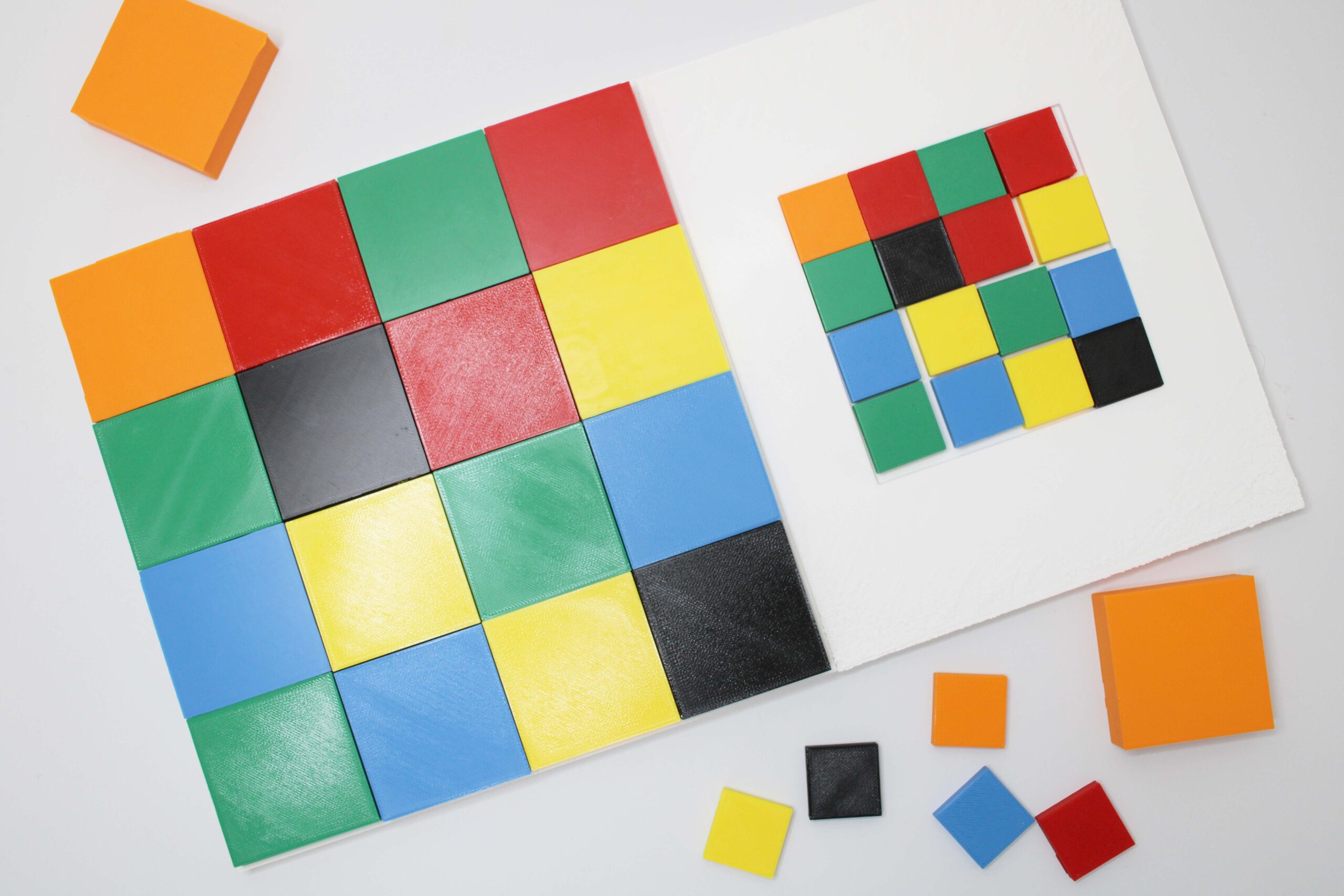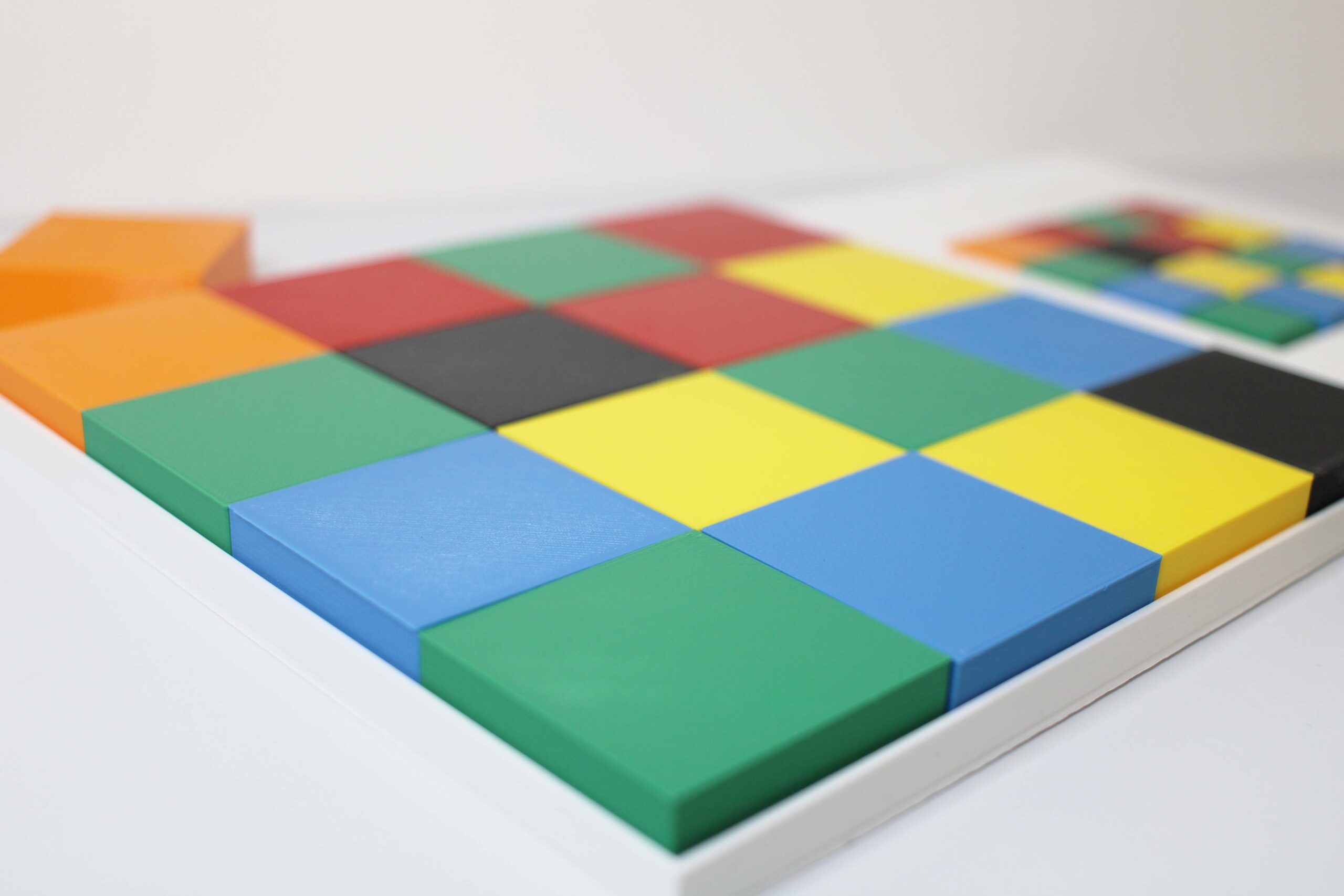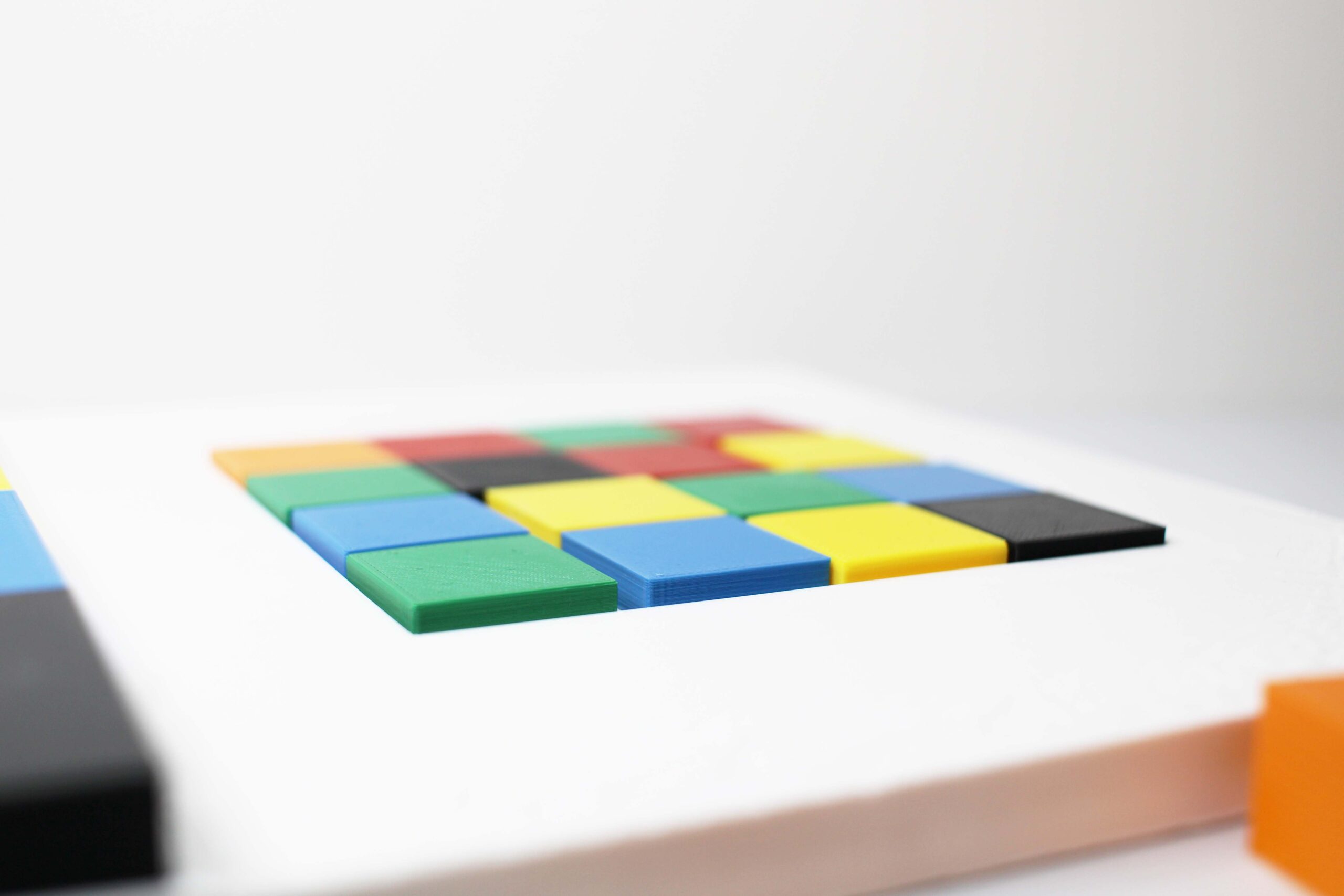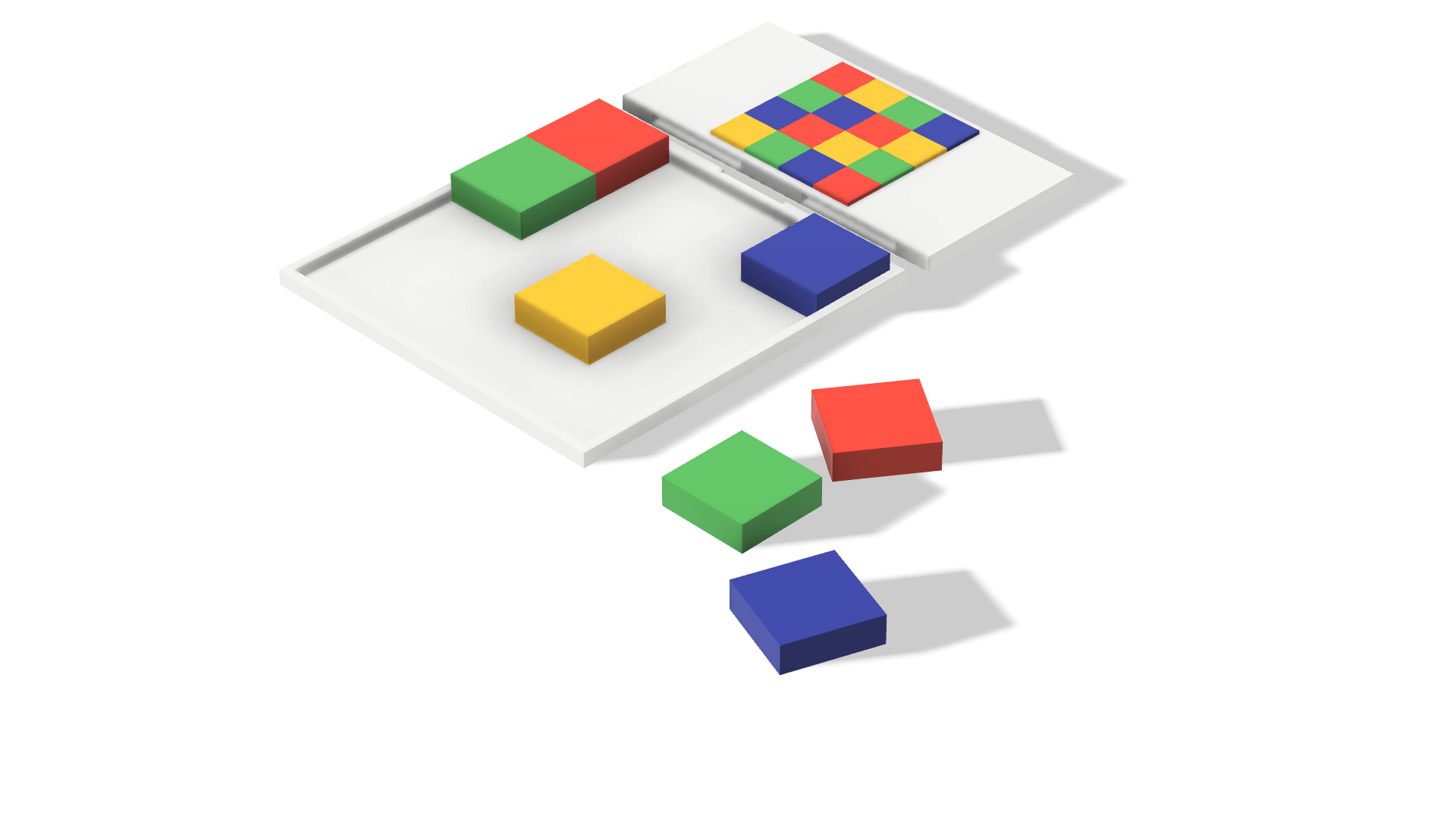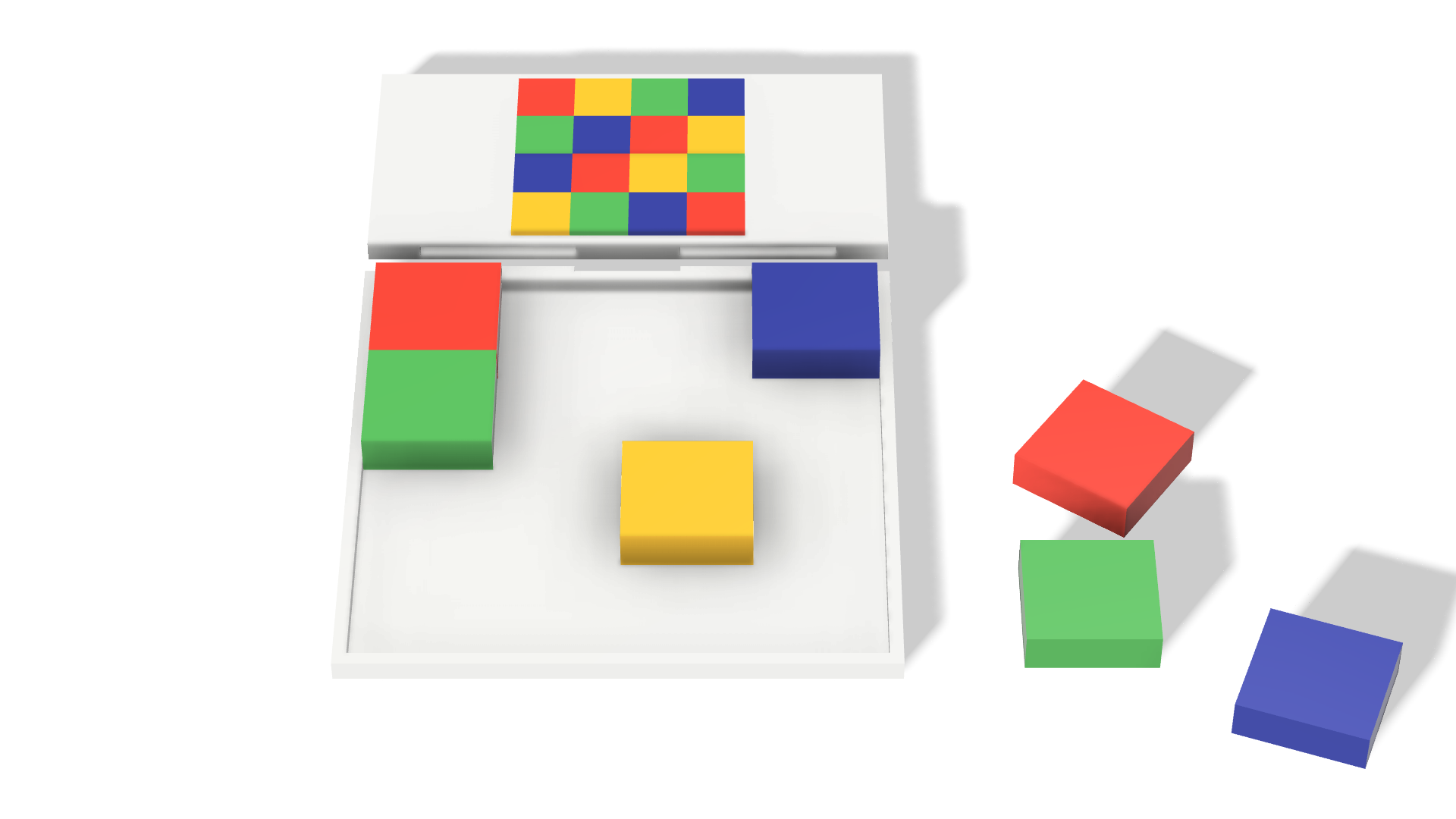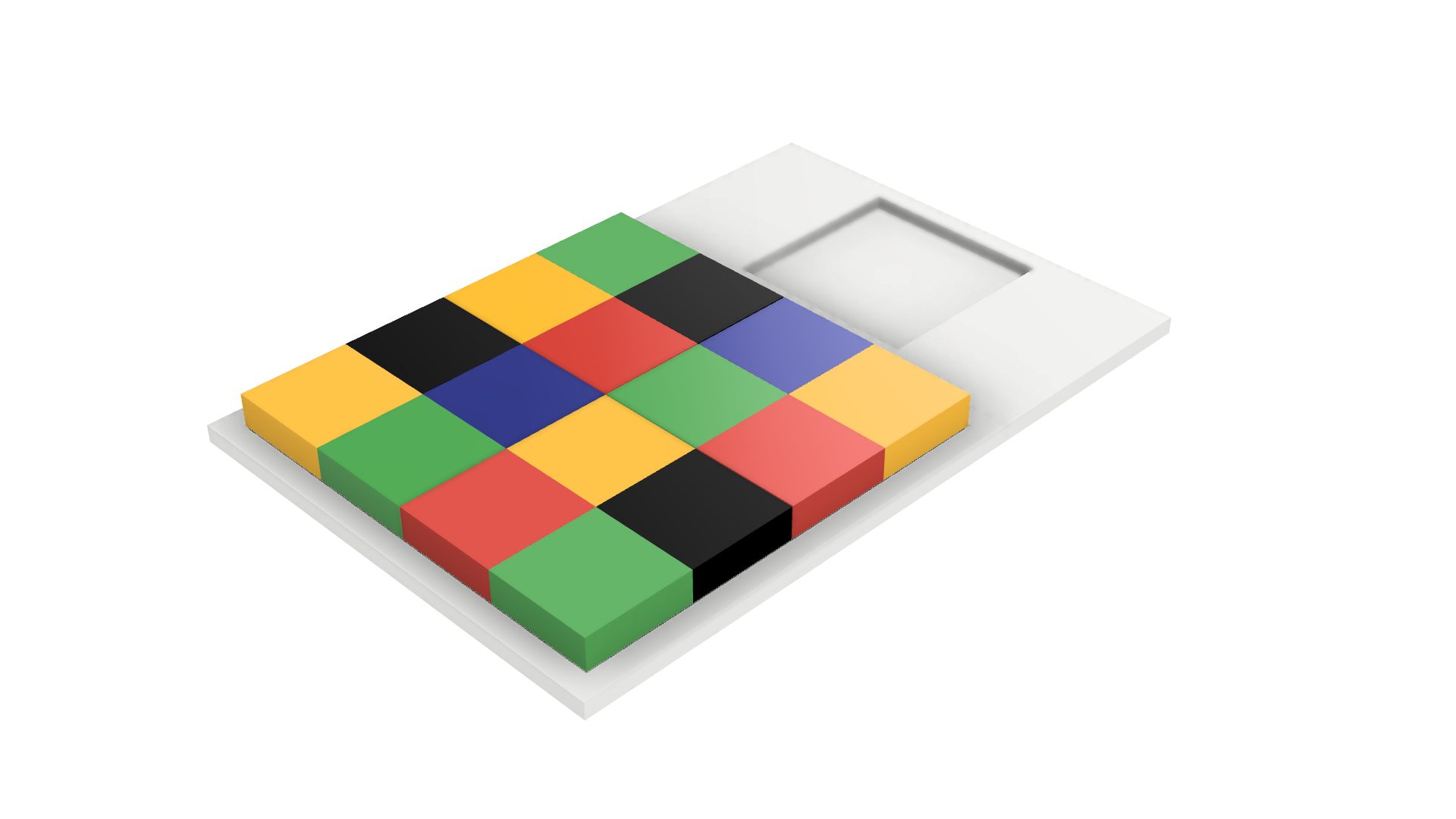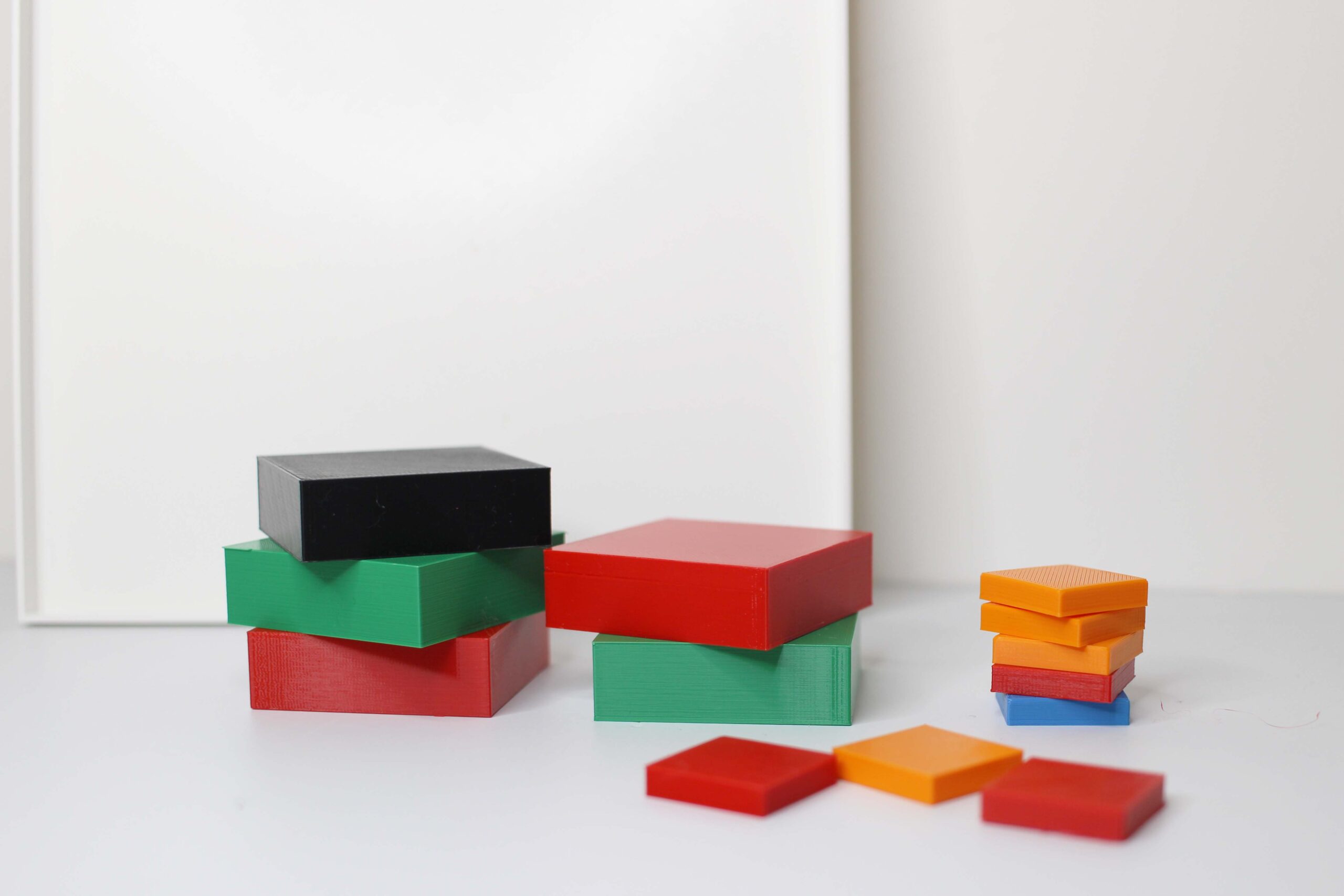
About
Exercise name:
Pattern puzzle
Which cognitive area is it related to?
Attention
Description of the exercise:
Arrange the pattern according to the predefined schemes. The exercise can be set up with varying degrees of difficulty according to the stage of dementia – suitable for people with mild to advanced stages.
How can this model be used at home and in residential care/nursing homes?
Dementia affects a person’s cognitive functions, self-identity, memory and concentration. It develops gradually and leads to a change of personality. People with dementia have a problem with memory, which leads to recall difficulties and problems with speech, coordination, abstract thinking, concentration, planning, orientation with regard to place and time, frequent mood swings.
This model can be provided to patients in residential care or nursing homes as well as in their own homes as the model is not big or heavy and is easy to transport. This exercise can help patients improve the skills of:
- Thinking
- Problem solving
- Sustained attention
- Visual processing
- Visual-motor coordination
- Abstract thinking
Instructions:
- At the bottom of the exercices, in the empty square, place little squares in a manner that you want.
- Ask the patient to recreate the sequence of the little squares above in the square at the bottom with cubes that are placed on the table.
Additional tips:
- If this is an easy level, place for the patient only the cubes of the colors shown in the selected scheme.
If this is a harder level, you can place all cubes for the patient.
What benefits can be obtained with its use?
The exercise can provide several benefits:
- Train critical thinking, concentration, attention and focus
- Support and improve abstract thinking and coordination skills
- Help improve problem solving abilities
- Train processing and perception skills
Technical specification of the model
Technology:
Material:
Colour (One piece one colour):
White, yellow, green, red, blue, black, orange
Suitable dimensions for its use in the classroom (MM):
The size of the board: L = 350 mm W = 250 mm H = 15 mm. The size of the top hole: : L = 90 mm W = 90 mm H = 3 mm. The size of the bottom hole: L = 200 mm W = 200 mm H = 6 mm.
The size of the cube blocks: L = 45 mm W = 45 mm H = 15 mm
Scheme sizes: L = 80 mm W = 80 mm H = 5 mm
Should the piece be resistant or be subjected to stress?
Yes
Should it be printed during meeting with person with dementia, before or after?
Before
Do you have to paint the model?
No
Number of pieces of which the model is composed:
In total: 29
- The board: 1
- The cube blocks: 24
- 4 yellow
- 4 green
- 4 red
- 4 blue
- 4 black
- 4 orange
- The schemes: 4
Ensemble type if necessary (slot, clip, screwed ...)
No
Accuracy and definition required. (Quality) Low, mid or High.
Mid
Images
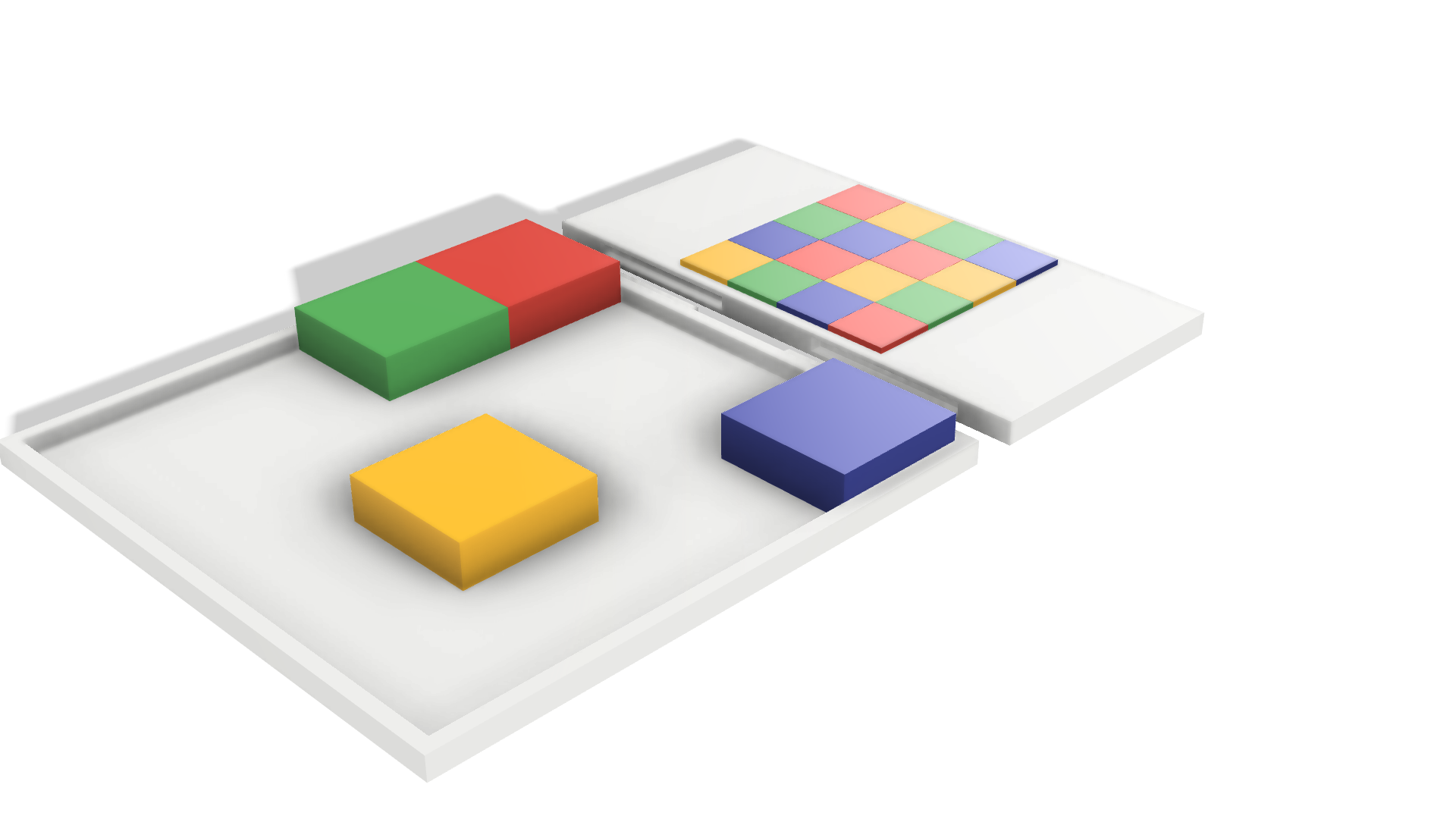
STL files viewer
Good luck!

